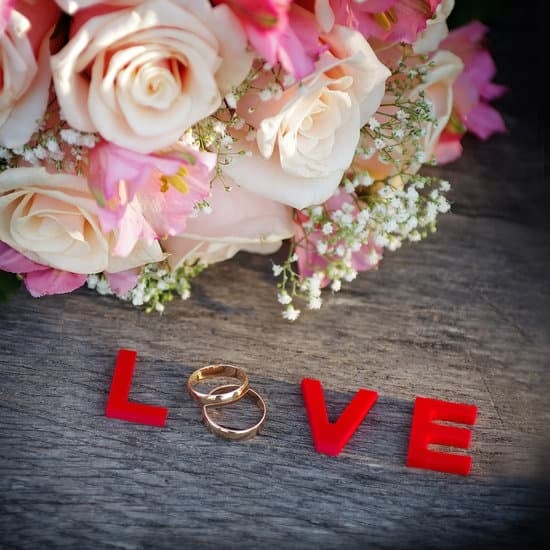Your wedding day is one of the most significant events in your life, and choosing the perfect color scheme can set the tone for the entire celebration. From the decorations to the attire, colors play a crucial role in creating a harmonious and visually appealing ambiance. The question on many couples’ minds is, “how many colors should a wedding have?” This article will delve into the considerations and tips for selecting the ideal color palette for your special day.
When it comes to choosing a color scheme for your wedding, there are various factors to take into account. The significance of color in wedding decorations and attire cannot be overstated, as it sets the mood and reflects the couple’s personality and style.
Cultural and traditional colors also play a significant role in many weddings, adding depth and meaning to the event. Additionally, understanding how different colors complement each other and impact emotions can help you create a cohesive and balanced color palette.
Incorporating multiple colors into your wedding without overwhelming the aesthetic is another aspect that many couples struggle with. It’s essential to strike a balance between incorporating various hues while maintaining an overall cohesive look.
Neutral colors can also play a pivotal role in balancing out a multi-colored wedding palette, providing a sense of calmness and elegance amidst vibrant tones. Ultimately, understanding how season and venue can influence your color selection is essential for creating a visually stunning and harmonious wedding color scheme.
The Significance of Color in Wedding Decorations and Attire
When it comes to planning a wedding, one of the most important and exciting decisions to make is the color scheme. The colors chosen for your wedding will set the tone for the entire event, from the decorations to the attire. It is essential to carefully consider how colors can impact the overall aesthetic and atmosphere of your special day.
Couples often spend countless hours deciding on the perfect color scheme for their wedding. This decision is crucial because colors have the power to evoke emotions, create ambiance, and reflect personal style. Whether you prefer bold and vibrant hues or soft pastels, selecting a color palette that resonates with you as a couple is key. Additionally, understanding the significance of different colors can help in choosing ones that align with your vision for your wedding.
Incorporating meaningful or cultural colors into your wedding can also add a personal touch to the celebration. Many couples choose to include traditional colors that hold significance in their heritage or family customs. This not only adds depth and meaning to the color scheme but also allows for a more personalized and unique wedding experience.
| Color Selection Tips | Data |
|---|---|
| Consider the emotions evoked by each color | Research shows that different colors can affect mood and emotions |
| Personalize with cultural or traditional colors | Incorporating meaningful cultural colors can add sentimental value |
| Balance bold colors with neutral tones | Nuetral tones can balance out bolder color choices |
Incorporating Cultural and Traditional Colors Into Your Wedding
When planning a wedding, incorporating cultural and traditional colors can add a meaningful and personal touch to the event. Many cultures have specific colors that hold significant symbolism and tradition, making them an important element of the wedding celebration. Whether it’s the vibrant red of traditional Chinese weddings, the festive and bright colors of Indian ceremonies, or the classic white associated with Western weddings, these colors can enhance the overall aesthetic and meaning of your special day.
For couples who come from different cultural backgrounds, incorporating a blend of traditional colors into the wedding can be a beautiful representation of their heritage and love story. This can be achieved by incorporating elements such as traditional attire, ceremonial rituals, or decorative accents in the chosen colors. It’s essential to do thorough research on the meanings behind these colors to ensure they are incorporated respectfully and appropriately into the wedding celebration.
One tip for couples looking to incorporate cultural and traditional colors into their wedding is to seek guidance from family members or elders who are knowledgeable about the significance of certain colors within their culture. Their insights can help ensure that the chosen colors are used in a way that honors tradition while creating a cohesive and visually stunning wedding palette. By embracing these impactful hues, couples can infuse their wedding with rich cultural symbolism while celebrating their diverse backgrounds.
| Traditional Color | Symbolism |
|---|---|
| Red (Chinese weddings) | Luck, joy, prosperity |
| Gold (Indian weddings) | Wealth, purity |
| White (Western weddings) | Purity, innocence |
Tips for Selecting Complementary Colors for Your Wedding Theme
Selecting complementary colors for your wedding theme can be a fun and creative process that allows you to personalize your special day. When choosing colors, it is essential to consider the overall aesthetic you want to achieve, as well as the mood and atmosphere you wish to create. Here are some tips for selecting complementary colors for your wedding theme:
Consider the Color Wheel
One way to choose complementary colors for your wedding theme is by using the color wheel. Complementary colors are those that are opposite each other on the color wheel, such as blue and orange, or purple and yellow. Using complementary colors can create a visually striking and harmonious effect that will stand out in wedding decorations and attire.
Take Inspiration From Your Venue
The venue of your wedding can also provide inspiration for selecting complementary colors. Consider the existing color palette of the venue and how you can incorporate complementary shades into your decor to enhance the overall ambience. For example, if your venue features neutral tones, you may opt for bold and vibrant complementary colors to add a pop of excitement.
Balance Bold With Neutral
When incorporating complementary colors into your wedding theme, it’s important to strike a balance between bold hues and neutral tones. While bold colors can add vibrancy and energy to your celebration, neutral shades such as white, ivory, or grey can help create a sense of harmony and prevent the overall aesthetic from becoming overwhelming.
By considering these tips when selecting complementary colors for your wedding theme, you can create a visually stunning and cohesive color palette that reflects your unique style and personality.
Exploring the Psychology of Colors and How They Can Impact Your Wedding
When it comes to planning a wedding, one of the most important decisions is choosing the color scheme. The colors you select will set the tone for the entire event and will influence everything from the decorations to the attire. But how many colors should a wedding have? This is a common question that many couples struggle with as they plan their special day.
There is no hard and fast rule when it comes to the number of colors to include in your wedding palette. Some weddings feature a single dominant color with accent colors, while others incorporate multiple colors for a vibrant and dynamic aesthetic. Ultimately, the decision should reflect your personal style and vision for the event.
Here are some considerations to keep in mind when choosing the number of colors for your wedding:
- Consider your personal preferences and what speaks to you as a couple
- Think about the overall theme or vibe you want to create for your wedding
- Take into account any cultural or traditional significance attached to certain colors within your families or heritage
While there is no right or wrong answer to how many colors should be included in a wedding, it’s essential to ensure that they complement each other well and create a cohesive look throughout the event. Whether you opt for a monochromatic scheme, a complementary color palette, or an array of shades, your choice should reflect your individuality as a couple and contribute to the overall ambiance of your special day.
Incorporating Multiple Colors Into Your Wedding Without Overwhelming the Aesthetic
When planning a wedding, deciding on the right color scheme is essential to creating the perfect atmosphere for your special day. Incorporating multiple colors into your wedding can add vibrancy and personality, but it’s important to do so in a way that doesn’t overwhelm the aesthetic. Here are some tips for incorporating multiple colors into your wedding without compromising the overall look and feel of the event:
- Start by choosing a primary color that will serve as the foundation for your wedding palette. This color will be the most prominent and will set the tone for the rest of the colors you choose.
- Once you have selected your primary color, choose one or two secondary colors that complement it. These secondary colors should enhance the primary color and create a cohesive look throughout your wedding decor and attire.
- Consider incorporating accent colors to add pops of brightness or contrast to your color palette. These accent colors should be used sparingly to prevent them from overpowering the rest of your chosen colors.
Incorporating multiple colors into your wedding allows for creative expression while adding depth and visual interest to your celebration. By carefully selecting and balancing your color choices, you can create a beautiful and harmonious overall aesthetic that reflects your personal style and vision for your special day.
We hope these tips help guide you in selecting the perfect combination of colors for your wedding, allowing you to create a truly stunning and memorable event that reflects both you and your partner’s unique personalities.
The Role of Neutral Colors in Balancing a Multi-Colored Wedding Palette
When planning a wedding, the color palette can play a significant role in setting the mood and overall aesthetic of the event. While incorporating multiple colors into your wedding theme can be visually stunning, it’s essential to consider the role of neutral colors in balancing the overall palette. Neutral colors such as white, ivory, beige, and gray can help tie together various vibrant hues while adding a sense of harmony and sophistication to the décor.
The Importance of Neutrals
Neutral colors serve as a visual anchor for a multi-colored wedding palette. They provide a sense of unity and prevent the overall look from becoming overwhelming or chaotic. By incorporating neutrals into your wedding décor, you can create a cohesive and balanced aesthetic that allows other vibrant colors to shine without competing for attention.
Using Neutrals in Wedding Attire
In addition to décor, neutral colors can also play a crucial role in wedding attire. Bridesmaid dresses, groomsmen suits, and even bridal gowns in neutral tones can complement and balance out the mix of colorful elements in the wedding. For example, bridesmaids’ dresses in soft blush or champagne hues can serve as an elegant contrast to bold floral arrangements or vibrant table linens.
Incorporating Neutrals Into Floral Arrangements
When it comes to floral arrangements, neutral blooms such as white roses, ivory hydrangeas, or pale green succulents can act as a unifying element among an array of colorful flowers. These neutral florals provide balance and cohesion while allowing brighter blooms to stand out against their backdrop. By carefully integrating neutral colors into your floral designs, you can achieve a harmonious and visually appealing result that enhances the overall ambiance of your wedding day.
How to Create a Cohesive and Balanced Color Palette for Your Wedding Day
When it comes to creating a cohesive and balanced color palette for your wedding day, it’s important to consider the overall aesthetic you want to achieve. Start by choosing a primary color that reflects your personal style and preferences. This color will serve as the foundation for your wedding palette and will help guide the selection of complementary colors.
Once you have chosen your primary color, consider selecting 2-3 additional colors to complement it. These secondary colors should harmonize with the primary color and can be used in various aspects of your wedding, such as decorations, flowers, attire, and invitations. It’s essential to strike a balance between these colors to ensure that they work together cohesively without overwhelming the overall aesthetic of your wedding.
To create a balanced color palette, consider incorporating neutral colors as well. Neutral tones like ivory, beige, or gray can provide a sense of balance and sophistication to your wedding palette. They can be used as a backdrop for other vibrant colors or as accentuating elements to tie the entire look together.
In addition to considering personal preferences, it’s also important to take into account the impact of season and venue on your color selection. Certain colors may be more suitable for specific seasons or may complement the natural surroundings of your venue. By considering these factors alongside your personal choices, you can create a cohesive and balanced color palette that enhances the overall ambiance of your special day.
The Impact of Season and Venue on Color Selection for Your Wedding
When it comes to choosing the perfect color scheme for your wedding, there are numerous factors to consider. One important consideration is the impact of the season and venue on your color selection. The time of year and location of your wedding can greatly influence the colors that will work best to create a cohesive and beautiful aesthetic.
For outdoor weddings in the spring or summer, you may want to consider bright and vibrant colors that reflect the warmth and blooming flowers of the season. On the other hand, autumn weddings could be complemented by rich and deep hues that mirror the changing foliage. Winter weddings might benefit from cool tones or even festive reds and greens. Similarly, indoor venues with specific decor or architectural features can also inspire your color choices.
It’s vital to remember that while considering seasonal and venue influences, you should also prioritize colors that hold personal significance to you as a couple. Whether it’s cultural traditions or simply favorite shades, incorporating meaningful colors into your wedding will ensure a day filled with personal touches and sentimental value. Ultimately, allowing these key elements to guide your color selections will help you create a stunning wedding palette that reflects both your unique style and the surrounding environment.
Frequently Asked Questions
How Many Colors Should Be in a Color Palette?
The number of colors in a color palette can vary depending on the aesthetic and theme of the event. Generally, a color palette may consist of 3-5 complementary or coordinating colors to create a cohesive look.
How Many Colors Should Be in a Bouquet?
The number of colors in a bouquet also depends on personal preference and the overall design. A traditional bouquet may feature 3-4 main colors, while more modern or monochromatic bouquets may only include one or two colors.
Are You Supposed to Match the Wedding Colors?
While it’s not mandatory to match the wedding colors exactly, it’s generally a good idea to incorporate some of the wedding colors into the overall decor and floral arrangements for a cohesive and polished look. Adding accents or complementary hues can help tie everything together without being overly matchy-matchy.

I have been involved in marriages for over 20 years helping couples and singles understand more about them.





